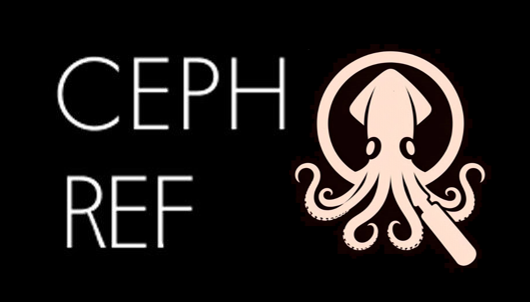Robsonella huttoni
The club pygmy octopus, Robsonella huttoni, is a small species of octopus native to New Zealand and Australia. It is a common member of rocky shore fauna, but little is known about it.
Head:
- The head is well developed and has one or two multi branched ocular cirri. The surface is papillose, with each papilla being low and rounded (O’Shea, 1999).
Gill lamellae:
- There are 6-8 gill lamellae, but usually it is 7 (O’Shea, 1999).
Arms:
- The surface of the arms are papillose, with each papilla being low and rounded. All arms have enlarged 10th-13th suckers in adults. These enlarged suckers are not greatly raised from the arm surface.
- In males, the 3rd right arm is hectocotylised. On this modified arm, there are 69-74 suckers, of which the distal 6-11 pairs are enlarged (O’Shea 1999; O’Shea & Jackson, 2009).
This species is widespread throughout New Zealand’s shorelines between 0-386m in depth (O’Shea, 1999). It typically occurs in intertidal and subtidal reefs (O’Shea & Jackson, 2009). It is known to occur around all of New Zealand’s islands, including the sub-Antarctic islands, except for Campbell Island. Only larval specimens have been collected from Macquarie Island. It is also known from south Australia (O’Shea, 1999).
Genetic evidence indicates that this species is most closely related to the Australian Octopus pallidus , and that it forms a clade with several New Zealand and southern hemisphere species. The genetic evidence also supported its transfer to the Robsonella genus (Ibáñez et al, 2020).
Synonyms
- Octopus adamsi Benham, 1944
- Octopus huttoni (Benham, 1943)
Common names
- Midget Octopus
- Club Pygmy Octopus
Colouration:
- Live specimens are highly variable in colouration and have been seen in red, orange and green. There are two iridescent patches behind the eyes. The arms are without bluish patches (O’Shea & Jackson, 2009).
Size:
- Small bodied, reaching an average overall length of 24cm and mantle length of 57mm (O’Shea, 1999).
Eggs:
- The eggs are 2.5mm in length and 1mm wide. They are entwined with each other to form string structures that range in length from 11mm to 25.8mm (Carrasco, 2013).
Hatchlings:
- Hatchlings have been measured at roughly 3mm in length and 1.55mm in width. The body is semitransparent and covered in small iridescent dots (Carrasco, 2013).
This species has been reported to lay 50-125 eggs per festoon with a total of 3800-6500 eggs total. Although reproduction may occur at any time throughout the year, it peaks during spring and summer. Embryo development length is temperature dependent, with a 44 day duration being reported at 17.3°C whereas at 12.7°C it was 158 days (Donlon et al, 2021).
One study reported that this species can live up to 250 days, but considered this to be an underestimation (Donlon et al, 2019).
Taxonomy and etymology
This species was first described as Octopus huttoni by William Benham in 1943 from specimens primarily caught in Otago, New Zealand. The species is named after notable zoologist Frederick Wollaston Hutton, who was the first to describe a species of octopus (Macroctopus maorum) from New Zealand (Benham, 1943). The most recent taxonomic redescription was in O’Shea (1999). It was transferred to the Robsonella genus in 2020 on the basis of genetic data (Ibáñez et al, 2020).
Conservation status and threats
Under the IUCN Red List, R. huttoni is listed as “Data Deficient” due to insufficient information about the general biology of this species (Allcock & Headlam, 2018). Due to the vulnerability of larval stages to high seawater temperatures, it has been suggested that the distribution of this species will shift southwards due to global warming (Higgins et al, 2012).
- Article about research cited here: https://www.orc.govt.nz/your-council/latest-news/news/2018/march/studying-midget-octopus/
- WoRMS species entry: https://www.marinespecies.org/aphia.php?p=taxdetails&id=342385
- Allcock, L., & Headlam, J. (2018). Octopus huttoni. The IUCN Red List of Threatened Species 2018: e.T162903A951656. https://dx.doi.org/10.2305/IUCN.UK.2018-2.RLTS.T162903A951656.en. Accessed on 14 April 2025.
- Benham, W.B. (1943). The octopodous Mollusca of New Zealand. 2. Transactions of the Royal Society of New Zealand 73: 53–57. page(s): 53.
- Carrasco, S. (2013). The early life history of two sympatric New Zealand octopuses: eggs and paralarvae of Octopus huttoni and Pinnoctopus cordiformis. New Zealand Journal of Zoology, 41(1), 32–45. https://doi.org/10.1080/03014223.2013.827126
- Donlon, E.M.Y., Damsteegt, E.L., McKinnon, J., Higgins, F.A., & Lamare, M.D. (2019). Growth and age of the midget octopus, Octopus huttoni. Aquat Ecol 53, 689–706 https://doi.org/10.1007/s10452-019-09719-y
- Donlon E.M.Y., McKinnon J.F., & Lamare M.D. (2021) Egg laying and embryo development of Octopus huttoni in response to temperature and season. Marine and Freshwater Research 72, 638-646. https://doi.org/10.1071/MF20184
- Higgins, F.A., Bates, A.E., & Lamar, M.D. (2012). Heat tolerance, behavioural temperature selection and temperature-dependent respiration in larval Octopus huttoni, Journal of Thermal Biology, Volume 37(1), 83-88. https://doi.org/10.1016/j.jtherbio.2011.11.004.
- Ibáñez, C.M., Fenwick, M; Ritchie, P.A., Carrasco, S. A., Pardo-Gandarillas, M.C. (2020). Systematics and Phylogenetic Relationships of New Zealand Benthic Octopuses (Cephalopoda: Octopodoidea). Frontiers in Marine Science, 7. https://doi.org/10.3389/fmars.2020.00182. ISSN 2296-7745
- O'Shea, S. (1999). The marine fauna of New Zealand: Octopoda (Mollusca:Cephalopoda). NIWA biodiversity memoir. Wellington: National Institute of Water and Atmospheric Research. ISBN 978-0-478-08486-3.
- O’Shea, S., & Jackson, G. D. (2009). Class Cephalopoda. In New Zealand Coastal Marine Invertebrates 1 (pp. 541–559). Canterbury University Press. ISBN: 9781877257605.
